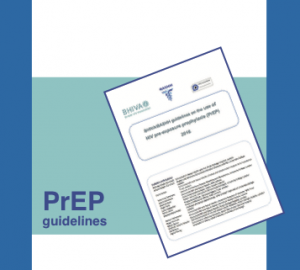UK PrEP guidelines now online (2018)
19 October 2018. Related: Guidelines, HIV prevention and transmission.
New guidelines for using PrEP in the UK were launched last week at the BHIVA conference and cover all aspects for using oral PrEP.
The guidelines, jointly produced by BHIVA and BASHH (professional organisations that specialise in HIV and sexual health), include recommendations on assessment for PrEP, dosing, monitoring, adherence, access (including online), cost-effectiveness and management of suspected HIV infection.
The strong evidence for efficacy and safety includes use during pregnancy and for transgender people.
The guidelines emphasise that there are no potential interactions between PrEP and feminising or masculinising hormones but also recognise that there are limited data on efficacy for vaginal (frontal) sex. Daily dosing is recommended for both trans men and trans women.
Safety concerns from daily TDF/FTC in adolescents include 1.5 – 2.0% reduced bone mineral density at the hip and spine from daily PrEP for a year. Routine monitoring is not recommended unless indicated by a high FRAX score.
Monitoring for kidney function is essential and was discussed in responses to the consultation draft documents. Although a mild decline in renal function is common and generally reversible after PrEP is stopped, it has a higher risk for older people (defined as being older than 40). For example, if eGFR is 60-90 mL/min/1.73 m2, the guidelines recommend annual monitoring in people younger than 40 years but every six months in those aged above 40. If baseline eGFR is < 60 mL/min/1.73 m2, PrEP should only be used on a case by case basis.
Time to protection after starting PrEP is based on whether the protection is for anal or vaginal sex. For anal sex, this is after a double-dose 2-24 hours (based on the IPERGAY study) and for vaginal sex this is after seven days of daily dosing.
Similar times after the last exposure are recommended for stopping PrEP: two daily doses for anal sex and seven daily doses after vaginal sex.
HIV testing is recommended every three months. Results that indicate suspected HIV infection should be interpreted with a regional expert. If seroconversion is suspected, the guidelines recommend intensification to ART in people still on PrEP and not restarting PrEP in people who are already off PrEP.
Baseline screening for hepatitis C (HCV) is recommended for gay men and others at risk as part of the full STI screening with three-monthly monitoring for HCV and bacterial STIs (chlamydia, gonorrhoea and syphilis).
Buying PrEP online is also supported, using advice from the community websites iwantprepnow.co.uk and prepster.info.
PrEP should be discussed on a case-by-case basis for risk factors other than sexual transmission. There are also limited data on efficacy on HIV transmission when the exposure route is from shared drug injecting, including slamming.
comment
These first pragmatic guidelines are important for establishing the strong clinical evidence for routine use of PrEP in the UK.
The guidelines are also important for covering many aspects where data is limited. As such, they should be routinely updated as new results become available.
The guidelines were produced with a large degree of professional and community involvement, It is also welcomed as good practice that all comments from the open consultations are also available online.
Reference
BHIVA/BASHH guidelines on the use of PrEP (2018)
https://www.bhiva.org/PrEP-guidelines (webpage)
Direct link to document (PDF)
Also published as open access article in HIV Medicine, March 2019; s1-s80.
https://onlinelibrary.wiley.com/toc/14681293/2019/20/S2


 Simon Collins, HIV i-Base
Simon Collins, HIV i-Base